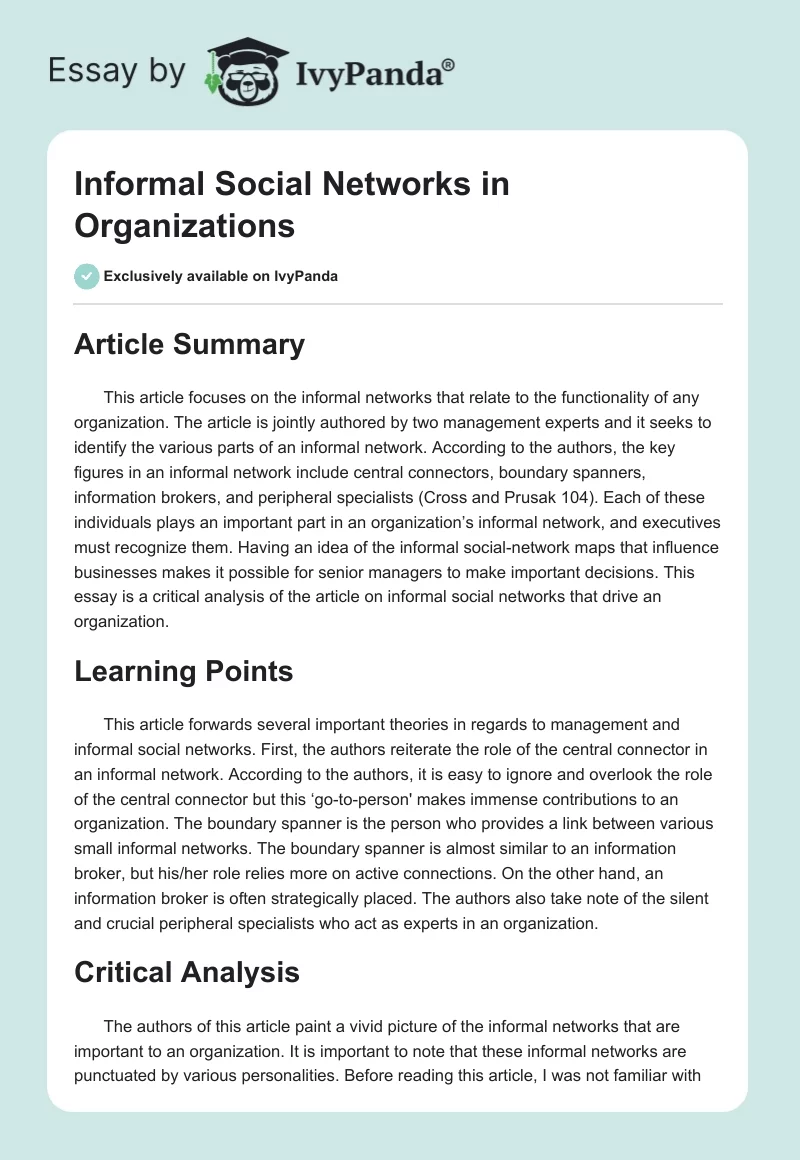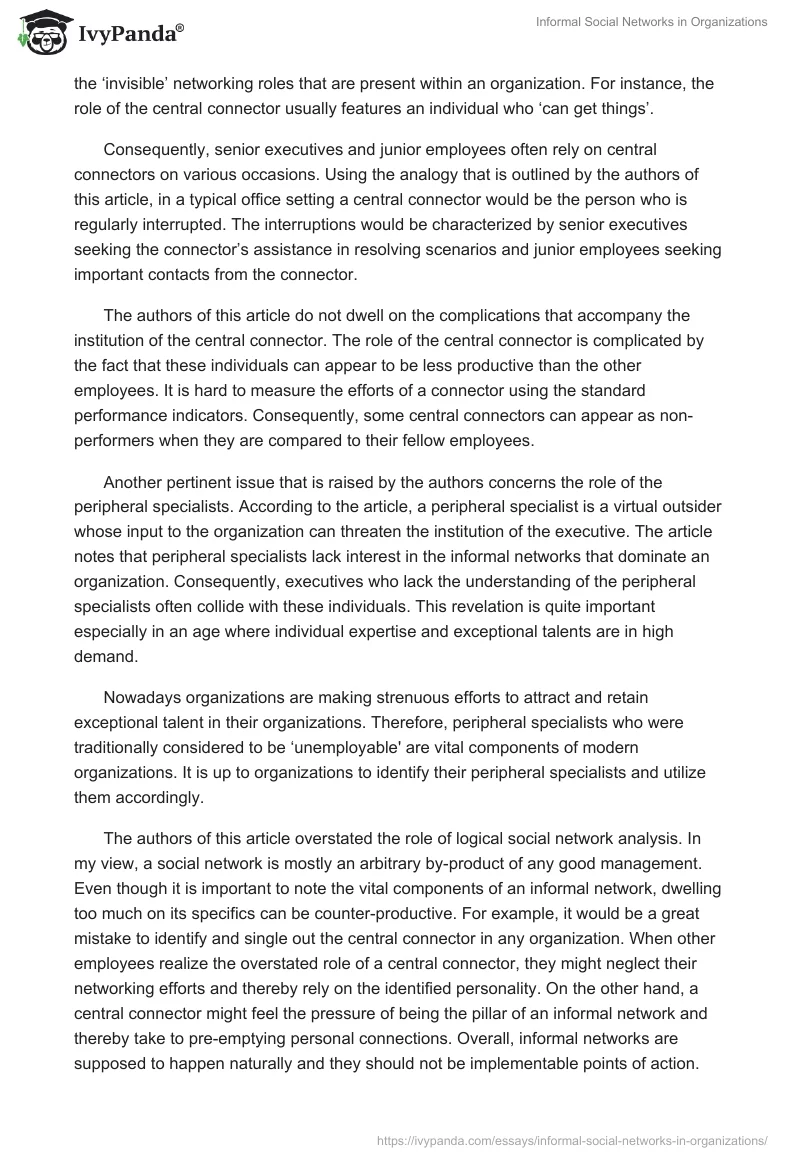Article Summary
This article focuses on the informal networks that relate to the functionality of any organization. The article is jointly authored by two management experts and it seeks to identify the various parts of an informal network. According to the authors, the key figures in an informal network include central connectors, boundary spanners, information brokers, and peripheral specialists (Cross and Prusak 104). Each of these individuals plays an important part in an organization’s informal network, and executives must recognize them. Having an idea of the informal social-network maps that influence businesses makes it possible for senior managers to make important decisions. This essay is a critical analysis of the article on informal social networks that drive an organization.
Learning Points
This article forwards several important theories in regards to management and informal social networks. First, the authors reiterate the role of the central connector in an informal network. According to the authors, it is easy to ignore and overlook the role of the central connector but this ‘go-to-person’ makes immense contributions to an organization. The boundary spanner is the person who provides a link between various small informal networks. The boundary spanner is almost similar to an information broker, but his/her role relies more on active connections. On the other hand, an information broker is often strategically placed. The authors also take note of the silent and crucial peripheral specialists who act as experts in an organization.
Critical Analysis
The authors of this article paint a vivid picture of the informal networks that are important to an organization. It is important to note that these informal networks are punctuated by various personalities. Before reading this article, I was not familiar with the ‘invisible’ networking roles that are present within an organization. For instance, the role of the central connector usually features an individual who ‘can get things’.
Consequently, senior executives and junior employees often rely on central connectors on various occasions. Using the analogy that is outlined by the authors of this article, in a typical office setting a central connector would be the person who is regularly interrupted. The interruptions would be characterized by senior executives seeking the connector’s assistance in resolving scenarios and junior employees seeking important contacts from the connector.
The authors of this article do not dwell on the complications that accompany the institution of the central connector. The role of the central connector is complicated by the fact that these individuals can appear to be less productive than the other employees. It is hard to measure the efforts of a connector using the standard performance indicators. Consequently, some central connectors can appear as non-performers when they are compared to their fellow employees.
Another pertinent issue that is raised by the authors concerns the role of the peripheral specialists. According to the article, a peripheral specialist is a virtual outsider whose input to the organization can threaten the institution of the executive. The article notes that peripheral specialists lack interest in the informal networks that dominate an organization. Consequently, executives who lack the understanding of the peripheral specialists often collide with these individuals. This revelation is quite important especially in an age where individual expertise and exceptional talents are in high demand.
Nowadays organizations are making strenuous efforts to attract and retain exceptional talent in their organizations. Therefore, peripheral specialists who were traditionally considered to be ‘unemployable’ are vital components of modern organizations. It is up to organizations to identify their peripheral specialists and utilize them accordingly.
The authors of this article overstated the role of logical social network analysis. In my view, a social network is mostly an arbitrary by-product of any good management. Even though it is important to note the vital components of an informal network, dwelling too much on its specifics can be counter-productive. For example, it would be a great mistake to identify and single out the central connector in any organization. When other employees realize the overstated role of a central connector, they might neglect their networking efforts and thereby rely on the identified personality. On the other hand, a central connector might feel the pressure of being the pillar of an informal network and thereby take to pre-emptying personal connections. Overall, informal networks are supposed to happen naturally and they should not be implementable points of action.
Practical Implications
The assertions that have been made in this article can be implemented in various managerial roles. For instance, a manager’s post can be defined using the analogy of a boundary spanner. A boundary spanner is important to an organization because he/she has expansive insights into various informal networks. On the other hand, an organization can enrich the role of a boundary spanner by constantly transferring such an individual from one post to another. Every organization should have a manager who can traverse all the organization’s boundaries (Robbins and Judge 67). Consequently, a boundary spanner can have a harmonizing effect on an organization because ideas can travel through him/her. The authors of this article also do a great job of explaining their assertions using basic language and examples.
Works Cited
Cross, Rob, and Laurence Prusak. “The people who make organizations go-or stop.” Harvard Business Review 80.6 (2002): 104-112. Print.
Robbins, Stephen P., and Timothy Judge. Organisational behavior, Sydney, Australia: Pearson Higher Education, 2013. Print.


